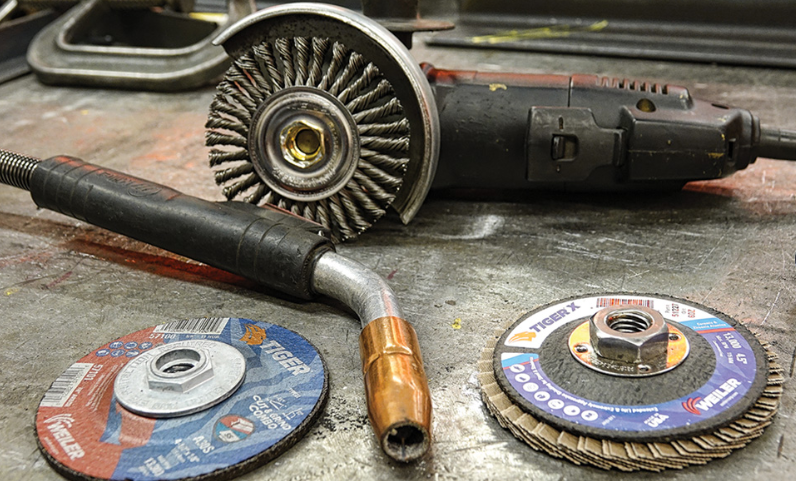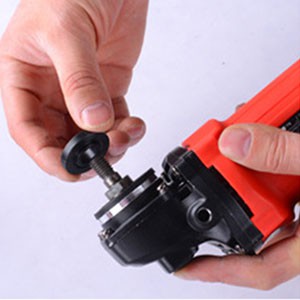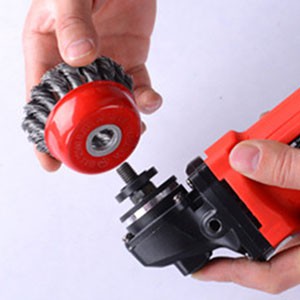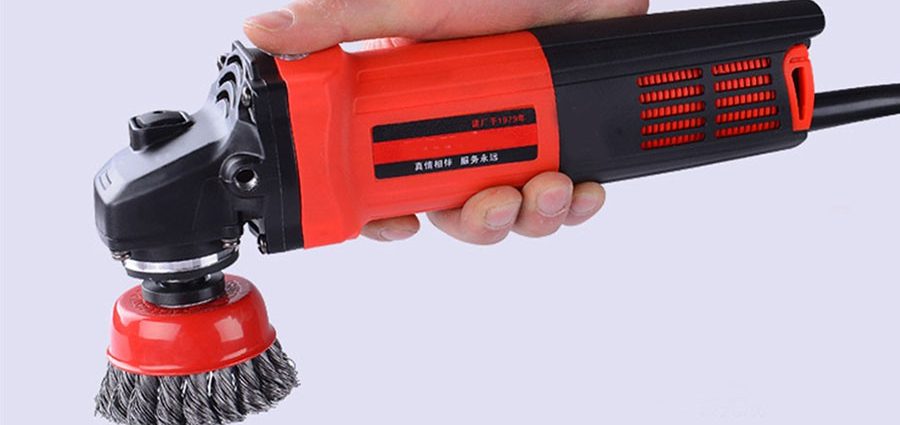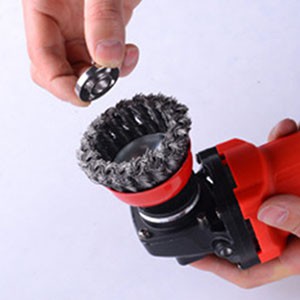Wire cup brushes are a popular tool used with angle grinders to remove rust, paint, and other types of surface contaminants. These brushes come in various types and sizes, each with its unique design for specific applications. Whether you are a DIYer or a professional, using wire cup brushes can help you achieve better results in your work. In this article, we will provide a comprehensive guide on how to install wire wheel brushes on angle grinder.
TYPES OF WIRE BRUSH
Cup Brush
Cup brushes are one of the most common types of wire brushes for angle grinders. They are ideal for cleaning, deburring, and surface preparation. Cup brushes are available in different materials, including stainless steel, carbon steel, and brass. They come in various sizes, shapes, and wire types, allowing you to choose the right brush for your specific application.
Before using a cup brush, make sure to wear appropriate protective gear, such as gloves and safety goggles. Also, ensure that your angle grinder is unplugged, and the cup brush is correctly installed.
To use a cup brush, hold your angle grinder securely and switch it on. Position the brush on the surface you want to clean and move it back and forth or in a circular motion. Avoid applying too much pressure as it may damage the brush or the surface you are cleaning. If the brush gets clogged with debris, turn off the angle grinder and remove the debris before continuing.
Bevel Wire Brush
Bevel wire brushes are similar to cup brushes, but they have a beveled edge that allows them to access tight spaces and corners. They are ideal for removing rust and paint from irregular surfaces. Bevel wire brushes are available in different materials and wire types, allowing you to choose the right brush for your specific application.
To use a bevel wire brush, follow the same steps as using a cup brush. Hold your angle grinder securely and switch it on. Position the brush on the surface you want to clean and move it back and forth or in a circular motion, paying attention to the corners and edges.
Crimped Wire Wheel Brush
Crimped wire wheel brushes are suitable for heavy-duty applications, such as removing rust, paint, and welding slag from large surfaces. wire brush attachment for angle grinder They are available in different sizes, wire types, and materials, including stainless steel, carbon steel, and brass. Crimped wire wheel brushes can be used on a variety of materials, including metal, concrete, and wood.
To use a crimped wire wheel brush, make sure to wear appropriate protective gear, such as gloves and safety goggles. Also, ensure that your angle grinder is unplugged, and the brush is correctly installed. Hold your angle grinder securely and switch it on. Position the brush on the surface you want to clean and move it back and forth or in a circular motion, applying enough pressure to remove the debris.
Twist Knot Wheel Brush
Twist knot wheel brushes are similar to crimped wire wheel brushes, but they have twisted wire bristles that are more aggressive and longer-lasting. They are suitable for heavy-duty applications, such as weld cleaning, surface preparation, and removing rust and paint from large surfaces. Twist knot wheel brushes are available in different sizes, wire types, and materials, including stainless steel, carbon steel, and brass.
To use a twist knot wheel brush, follow the same steps as using a crimped wire wheel brush. Hold your angle grinder securely and switch it on. Position the brush on the surface you want to clean and move it back and forth or in a circular motion, applying enough pressure to remove the debris.
Shaft Mounted Brushes
Shaft mounted brushes are designed to be mounted on the spindle of your angle grinder. They are ideal for cleaning and deburring small parts, such as pipes, tubes, and fittings.
Shaft mounted brushes are available in different types, including crimped wire brushes, knot wire brushes, and nylon abrasive brushes. They come in various sizes and materials, such as stainless steel, carbon steel, and brass.
To use a shaft mounted brush, make sure that your angle grinder is unplugged and the brush is correctly installed on the spindle. Hold your angle grinder securely and switch it on. Position the brush on the part you want to clean and move it back and forth or in a circular motion, paying attention to the corners and edges.
Shaft Mounted End Brushes
Shaft mounted end brushes are similar to shaft mounted brushes, but they have a smaller diameter and are designed for more precise applications. They are suitable for cleaning and deburring small parts, such as metalwork and machine parts. Shaft mounted end brushes are available in different types, including crimped wire brushes, knot wire brushes, and nylon abrasive brushes. They come in various sizes and materials, such as stainless steel, carbon steel, and brass.
To use a shaft mounted end brush, follow the same steps as using a shaft mounted brush. Make sure that your angle grinder is unplugged and the brush is correctly installed on the spindle. Hold your angle grinder securely and switch it on. Position the brush on the part you want to clean and move it back and forth or in a circular motion, paying attention to the corners and edges.
Nylon Abrasive Brushes
Nylon abrasive brushes are ideal for surface finishing and polishing. They are designed to be gentle on the surface, making them suitable for delicate materials such as wood, plastics, and composites. Nylon abrasive brushes are available in different types, including cup brushes, wheel brushes, and end brushes. They come in various sizes and abrasive grits, allowing you to choose the right brush for your specific application.
To use a nylon abrasive brush, make sure that your angle grinder is unplugged and the brush is correctly installed. Hold your angle grinder securely and switch it on. Position the brush on the surface you want to polish and move it back and forth or in a circular motion, applying enough pressure to achieve the desired finish.
Tips for Using Wire Cup Brushes
Wear appropriate protective gear, such as gloves and safety goggles, to avoid injury from flying debris.
Make sure that your angle grinder is unplugged before installing or removing the brush.
Choose the right type of wire cup brush for your specific application.
Use the appropriate speed for your angle grinder to avoid damaging the brush or the surface you are cleaning.
Avoid applying too much pressure as it may damage the brush or the surface you are cleaning.
Clean the brush regularly to remove debris and prolong its life.
Discard damaged or worn-out brushes to avoid injury and achieve better results.
Conclusion
Wire cup brushes are an essential tool for anyone working with metal, concrete, or wood. They come in different types and sizes, each with its unique design for specific applications. Knowing how to use wire cup brushes for angle grinder and choose the right wire cup brush for your specific application can help you achieve better results and prolong the life of your tool. By following the tips and techniques outlined in this guide, you can use wire cup brushes safely and effectively with your angle grinder.

